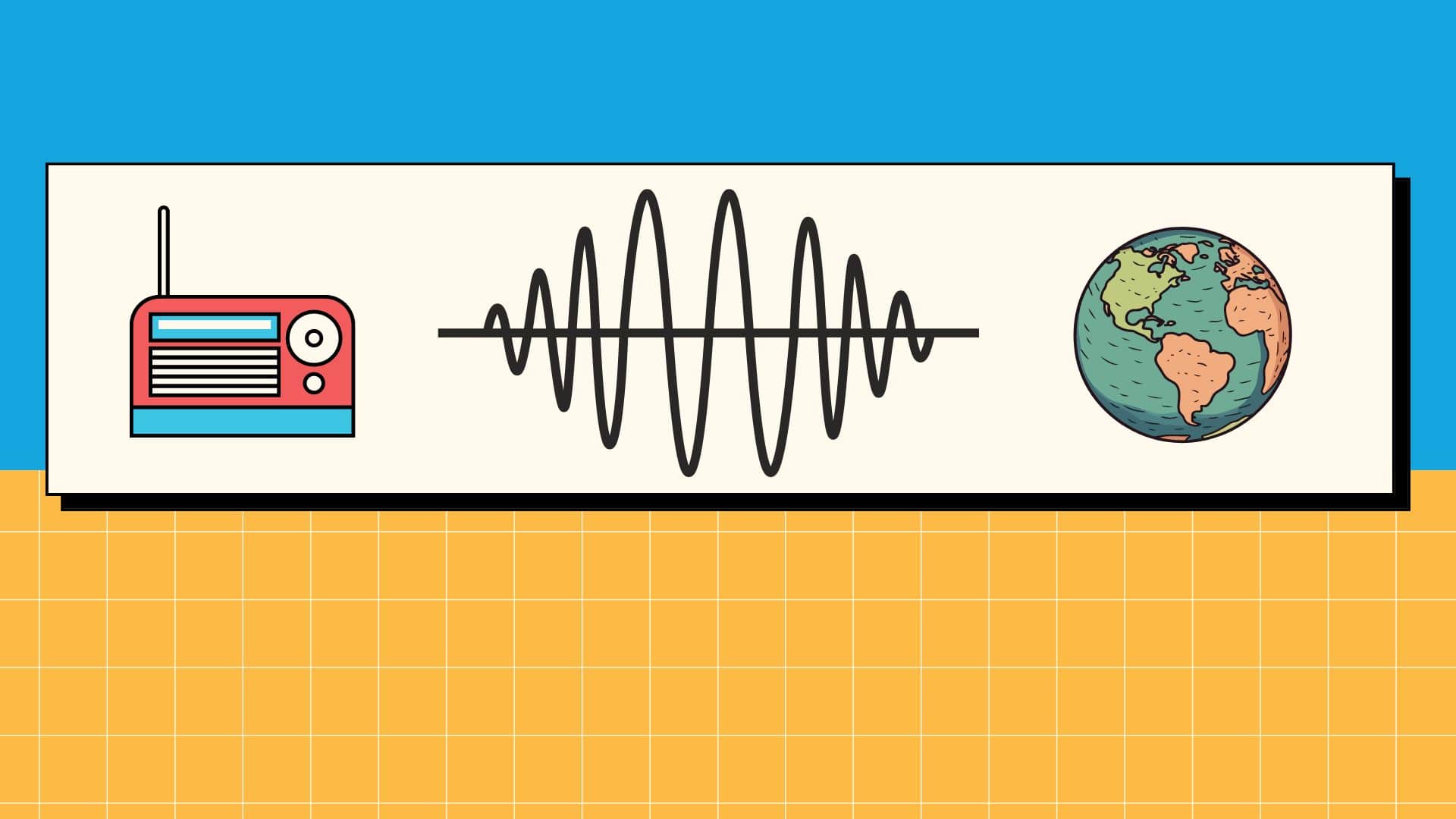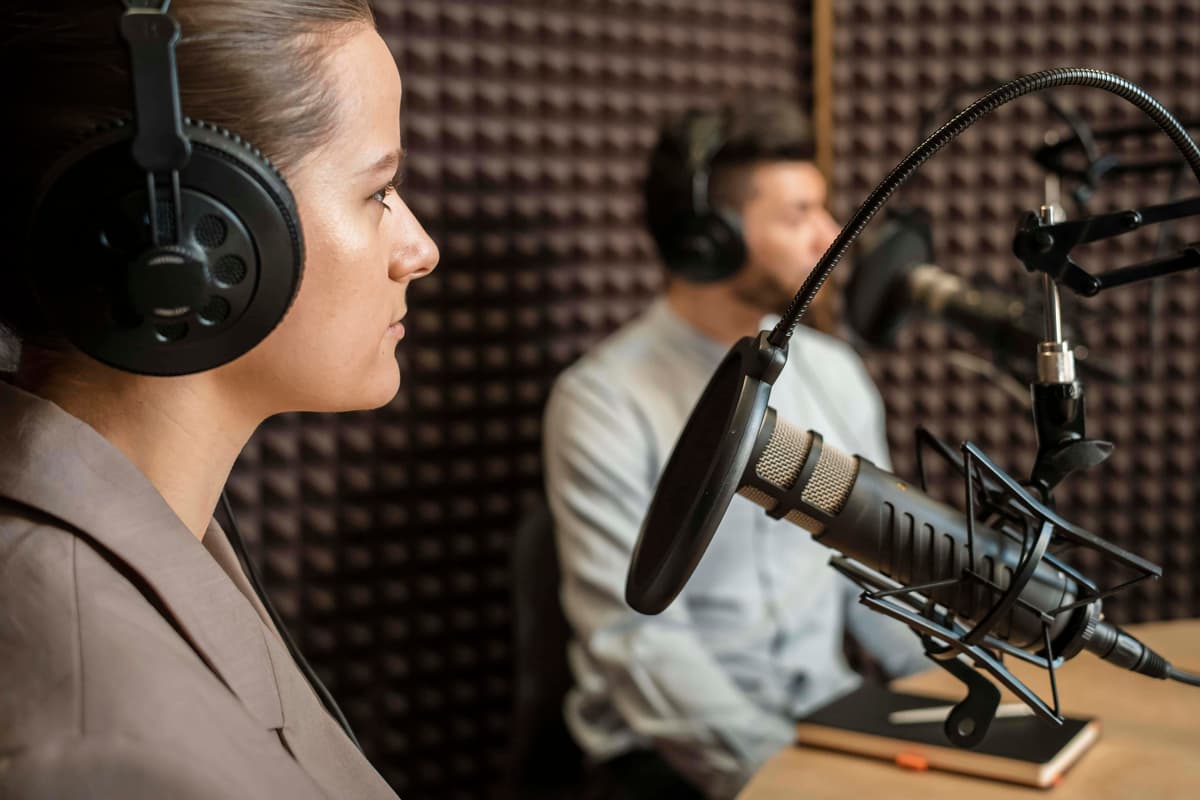
Radio broadcasting has come a long way from its early days of AM stations to the clear sounds of FM. However, the biggest changes have come with the digital age. Technology is reshaping radio in exciting ways, making it more accessible and interactive than ever before.
Today, internet radio, podcasts, mobile apps, and even artificial intelligence are transforming how we listen to and create radio content. Technological advancements are revolutionizing radio broadcasting in many different ways.

In the early 20th century, AM Amplitude Modulation radio was the standard for broadcasting. It allowed listeners to tune into news, music, and entertainment programs, despite the static and interference. The invention of FM Frequency Modulation radio in the 1930s brought a significant improvement in sound quality, offering clearer and more reliable broadcasts. FM gained popularity for its superior audio experience, especially for music lovers.
Satellite radio, launched in the early 2000s, further revolutionized the industry by providing a vast array of channels with high-quality sound, free from the limitations of terrestrial signals. Services like SiriusXM offered a wide range of content, including music, talk shows, and sports, all accessible from virtually anywhere. This expanded the reach of radio, making it a global medium.

The internet has had a profound impact on radio broadcasting. Internet radio allows listeners to stream their favorite stations from around the world, breaking geographic barriers. Streaming services like Spotify, Pandora, and Apple Music have also entered the scene, offering personalized radio experiences based on user preferences. These platforms have changed the way we consume audio content, providing on-demand access to an array of music and shows.
The internet has democratized radio broadcasting, allowing anyone with a computer or smartphone to start their own radio station or podcast. This has led to a surge in diverse and niche content that might not have found a place on traditional radio. From independent music shows to educational programs and talk shows on specialized topics, internet radio and podcasts cater to a wide range of interests and communities.
Traditional radio relies heavily on advertising, but streaming services offer additional monetization options such as subscriptions and premium content. Platforms like Spotify and Apple Music provide paid subscriptions that remove ads and offer exclusive content.
While the rise of internet and streaming services has brought many benefits, it has also introduced new challenges. The sheer volume of content available online can make it difficult for broadcasters to stand out. Additionally, the shift to digital has impacted traditional radio’s advertising revenue. However, these challenges also present opportunities for innovation. Broadcasters are finding creative ways to engage with their audiences.
Podcasting has emerged as a powerful force in the world of audio broadcasting, revolutionizing the way we consume and produce content. Many of my peers listen to podcasts and learn valuable information from them.
Podcasts are digital audio files available for streaming or download, often released as a series with new episodes added regularly. They cover a vast array of topics, from news and storytelling to education and entertainment. The popularity of podcasts has skyrocketed in recent years, with millions of people tuning in to their favorite shows daily.
According to podcast stats, 464 million people listen to podcasts worldwide. The number of viewers is predicted to increase every year. Podcasts offer a level of flexibility and accessibility that traditional radio cannot match. Listeners can access podcasts on demand, allowing them to enjoy content at their convenience, whether during their commute, workout, or leisure time. This on-demand nature has significantly changed listening habits, as people can now curate their own audio experiences rather than being tied to a broadcaster’s schedule.
Unlike traditional radio, which often requires significant resources and infrastructure, starting a podcast can be relatively inexpensive and straightforward. This has opened the door for a diverse range of voices and perspectives to be heard. Independent creators, hobbyists, and professionals alike can share their stories, ideas, and expertise with a global audience. It’s so simple to make a podcast that you could even start one yourself.

Many radio stations use social media platforms for livestreaming, allowing listeners to watch and listen to their favorite shows. This visual element adds a new dimension to radio broadcasting, making it more interactive and engaging. Platforms like Facebook Live, Instagram Live, and YouTube Live enable hosts to interact with listeners, answering questions, and responding to comments in real time.
In times of crisis or significant events, social media serves as a crucial communication tool for radio stations. It allows them to quickly disseminate important information, provide updates, and manage public relations. Whether it’s addressing technical issues, responding to controversies, or providing emergency information, social media enables stations to maintain trust with their audience.

The use of artificial intelligence is increasing in many fields, and radio broadcasting is no exception. AI algorithms can generate content including scripts, news summaries, and even music. This technology can help radio stations produce high-quality content more efficiently.
One of the most significant benefits of AI in radio broadcasting is its ability to personalize content for individual listeners. By analyzing listener data, AI can recommend songs, shows, and podcasts that match a user’s preferences. This level of personalization enhances the listening experience and keeps audiences engaged. Services like Spotify and Pandora use AI-driven recommendation systems to create custom playlists, making it easier for listeners to discover new content they’ll love.
Advancements in AI have led to the development of highly realistic synthetic voices. These AI-generated voices can be used for various purposes, including reading news bulletins, delivering weather updates, and even hosting entire shows. While still a developing technology, AI voices offer a glimpse into the future of radio broadcasting, where human and machine voices may seamlessly coexist.
Technology has revolutionized radio broadcasting, transforming it from the traditional AM and FM formats into a dynamic digital experience. Internet and streaming services have expanded access to global content, podcasts have taken over, and social media has enhanced listener engagement. AI is further personalizing and streamlining the broadcasting process, making radio more interactive and more efficient than ever before.
As we move forward, the integration of new technologies will continue to reshape radio broadcasting, ensuring it remains relevant and engaging. By embracing these advancements, radio can continue to inform, entertain, and connect audiences worldwide, maintaining its role in our daily lives.